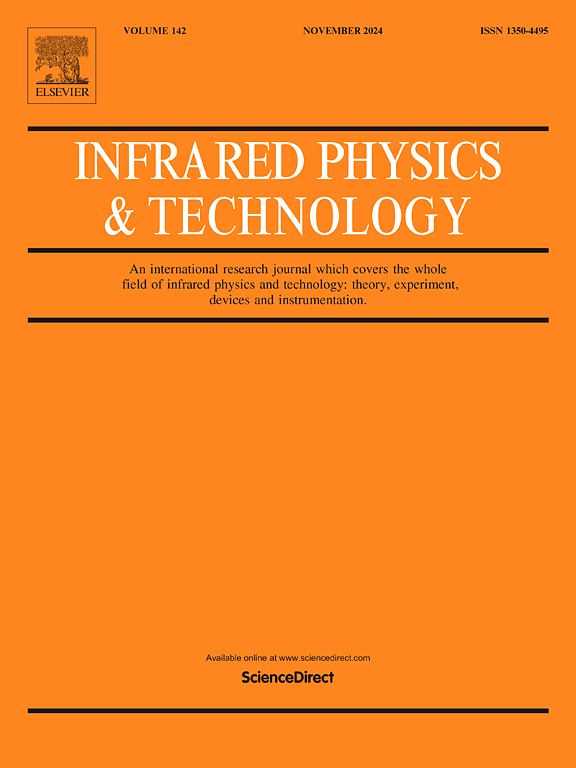模拟阿尔茨海默病大脑对915 nm激光照射的反应:探索有效光生物调节治疗的功率水平、激光配置、温度和剂量
IF 3.1
3区 物理与天体物理
Q2 INSTRUMENTS & INSTRUMENTATION
引用次数: 0
摘要
阿尔茨海默病(AD)是一种进行性神经退行性疾病,影响着全世界数百万人。本研究评估了915 nm波长下功率变化对脑光生物调节(PBM)治疗的影响。本研究使用分布在头部的不同数量的点激光源(2、4和9)来评估激光照射的连续波(CW)和脉冲波(PW)模式。脉冲波的特征包括100 Hz的频率,50%的占空比,以及10、20、25、50和100 mW的可变平均功率水平。脑表面温度和室温的主要模拟条件分别设置为37℃和24℃。通过计算Pennes生物热方程来确定激光照射过程中随时间变化的组织温度响应。在确定每一层的通量和总能量通量后,还计算了功率剂量。结果表明,使用2个、4个或9个平均功率为10 mW的激光源治疗脑PBM是合适的。在较低的功率水平下,三种激光配置在保持皮肤温度在37°C的同时,在大脑(GM, WM)中实现了足够的能量通量分布。这项研究证实,两个激光源(915 nm)可以通过头部为阿尔茨海默病患者提供所需的治疗剂量,而不会产生热副作用。本文章由计算机程序翻译,如有差异,请以英文原文为准。
Simulation the Alzheimer brain response to 915 nm laser irradiation: Exploring power levels, laser configurations, temperature, and dosages for effective photobiomodulation therapy
Alzheimer’s disease (AD)−a progressive neurodegenerative disorder−affects millions of individuals worldwide. This study evaluates the effect of power variation in brain Photobiomodulation (PBM) therapy using a wavelength of 915 nm. This study evaluates the continuous wave (CW) and pulsed wave (PW) modes of laser irradiation using varying numbers of point laser sources (2, 4, and 9) distributed across the head. The pulse wave features include a frequency of 100 Hz, a duty cycle of 50 %, and variable average power levels of 10, 20, 25, 50, and 100 mW. The primary simulation conditions of the brain surface temperature and room temperature were set to 37 °C and 24 °C, respectively. The evaluation was performed by calculating the Pennes bioheat equation to determine the time-dependent tissue temperature response during laser irradiation. Power doses were also calculated after determining each layer’s fluence rate and total energy flux. The results indicate that using two, four, or nine laser sources with an average power of 10 mW is suitable for brain PBM therapy. The three laser configurations achieve sufficient energy flux distribution in the brain (GM, WM) while maintaining the skin temperature at 37 °C at lower power levels. This research confirms that two laser sources (915 nm) deliver the required therapeutic dose across the head for Alzheimer’s patients without causing thermal side effects.
求助全文
通过发布文献求助,成功后即可免费获取论文全文。
去求助
来源期刊
CiteScore
5.70
自引率
12.10%
发文量
400
审稿时长
67 days
期刊介绍:
The Journal covers the entire field of infrared physics and technology: theory, experiment, application, devices and instrumentation. Infrared'' is defined as covering the near, mid and far infrared (terahertz) regions from 0.75um (750nm) to 1mm (300GHz.) Submissions in the 300GHz to 100GHz region may be accepted at the editors discretion if their content is relevant to shorter wavelengths. Submissions must be primarily concerned with and directly relevant to this spectral region.
Its core topics can be summarized as the generation, propagation and detection, of infrared radiation; the associated optics, materials and devices; and its use in all fields of science, industry, engineering and medicine.
Infrared techniques occur in many different fields, notably spectroscopy and interferometry; material characterization and processing; atmospheric physics, astronomy and space research. Scientific aspects include lasers, quantum optics, quantum electronics, image processing and semiconductor physics. Some important applications are medical diagnostics and treatment, industrial inspection and environmental monitoring.

 求助内容:
求助内容: 应助结果提醒方式:
应助结果提醒方式:


